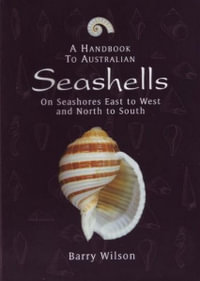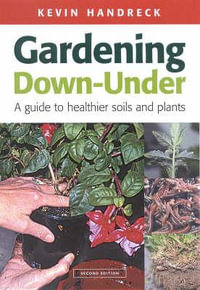
Wetland Environments
A Global Perspective
By: James S. Aber, Firooza Pavri, Susan W. Aber
Hardcover | 21 September 2012 | Edition Number 1
At a Glance
440 Pages
25.17 x 19.3 x 2.65
Hardcover
$405.95
or 4 interest-free payments of $101.49 with
orAims to ship in 10 to 15 business days
A complete study of wetland environments requires the assessment of their physical and biological attributes, properties and functions of these ecosystems, and the economic, political and social aspects that mediate their use globally. A systems approach is taken throughout this book which emphasizes the interactions between these elements of wetland ecosystems. Moreover, selected case studies from across the world are used to illustrate wetland characteristics and circumstances.
This book is intended to foster a greater awareness and appreciation of wetlands, promote a culture of conservation and wise management, and spread the knowledge that wetlands are important, indeed crucial, elements of the global environment. Our attempts to understand, manage and enhance wetlands in the twenty-first century are part of the larger effort to maintain a sustainable Earth.
Readership: Introductory or intermediate level undergraduates taking courses on wetland environments
Additional resources for this book can be found at: www.wiley.com/go/aber/wetland.
Industry Reviews
?Overall, this is an excellent course resource for advanced undergraduates and beginning graduate students, as well as professionals who wish to deepen their understanding of these complex ecosystems. Summing Up: Highly recommended. Upper-division undergraduates and above.? (Choice, 1 August 2013)
Acknowledgements xiv
Part I
1 Wetland overview 1
1.1 Introduction 1
1.2 How much and where 4
1.3 Wetland trends 8
1.4 Wetland preservation and protection 10
1.5 Wetland science 11
1.6 Book approach and outline 13
1.7 Summary 13
2 Wetland criteria 15
2.1 Definitions 15
2.2 Water 16
2.3 Soil 18
2.4 Vegetation 20
2.5 Wetland classification 22
2.6 Peatland 24
2.7 Anthropogenic dimensions of wetlands 27
2.8 Summary 28
3 Methods in wetland research 30
3.1 Introduction 30
3.2 Remote sensing 31
3.2.1 Image resolution and interpretability 32
3.2.2 Wetland image interpretation 35
3.2.3 Macro-level systems 37
3.2.4 Meso-level systems 41
3.2.5 Micro-level systems 42
3.3 Maps and geographic information systems 46
3.4 Physical ground-based methods 48
3.4.1 Surface methods 48
3.4.2 Subsurface methods 51
3.5 Flora, fauna and ecological monitoring and survey methods 53
3.6 Social science methods and techniques 56
3.7 Summary 57
Part II
4 Wetland hydrology 58
4.1 Introduction 58
4.2 Surface and ground water 61
4.3 Floods and flooding 64
4.4 Hydrologic functions of streams and wetlands 65
4.5 Hydrochemistry 68
4.6 Summary 70
5 Wetland soil 72
5.1 Introduction 72
5.2 Brief history and soil classification 73
5.3 Hydric soil criteria 78
5.4 Mineral and organic hydric soils 79
5.5 Submerged wetland substrates 81
5.6 Summary 82
6 Wetland vegetation 86
6.1 Plant adaptations 86
6.1.1 Structural adaptations 86
6.1.2 Biochemical adaptations 88
6.2 Ecological categories 89
6.2.1 Shoreline plants 90
6.2.2 Emergent plants 92
6.2.3 Floating plants 94
6.2.4 Submerged plants 96
6.2.5 Plant zonation 97
6.3 Indicator categories 99
6.4 Plant hardiness zones 101
6.5 Invasive plant species 102
6.6 Summary 105
7 Wetland wildlife 107
7.1 Introduction 107
7.2 Wetland invertebrates 108
7.2.1 Insects 108
7.2.2 Mosquitos 110
7.2.3 Corals 111
7.3 Wetland vertebrates 113
7.3.1 Amphibians 113
7.3.2 Reptiles 115
7.3.3 Birds 117
7.3.4 Mammals 125
7.4 Invasive animal species 130
7.5 Summary 132
Part III
8 Wetland change 135
8.1 Introduction 135
8.2 Hydroseral succession 136
8.3 Sea-level change and crustal movements 139
8.3.1 Glacial eustasy 139
8.3.2 Glacial isostasy 141
8.3.3 Complicated responses 141
8.3.4 Modern sea-level rise 143
8.4 Climate change 147
8.4.1 Climate basics 147
8.4.2 Climate and wetlands 150
8.5 Fire 152
8.6 Summary 154
9 Wetlands through time 156
9.1 Introduction 156
9.2 Coal 157
9.2.1 Paleozoic coal 157
9.2.2 Cretaceous?Tertiary coal and lignite 158
9.3 Amber 160
9.4 Pleistocene and Holocene wetlands 163
9.4.1 Nordic region 164
9.4.2 North America 167
9.4.3 Tropics and Antarctica 171
9.4.4 Holocene climate and early man 171
9.5 Summary 173
10 Environmental cycles and feedback 175
10.1 Biogeochemical cycles 175
10.1.1 Wetland elements 175
10.1.2 Nitrogen 175
10.1.3 Phosphorus, potassium and sulfur 177
10.2 Carbon cycle 179
10.2.1 Carbon reservoirs 179
10.2.2 Carbon balance 179
10.2.3 Carbon gases and climatic feedback 180
10.3 Fossil fuels 181
10.3.1 Fossil-fuel consumption 181
10.3.2 Coal mining and acid rain 183
10.3.3 Estonian oil shale 184
10.4 Human experiment 185
10.5 Summary 187
Part IV
11 Wetland services, resources and valuation 190
11.1 Human use of wetland ecosystems 190
11.2 Ecosystem services 191
11.2.1 Habitats 191
11.2.2 Wetlands and biogeochemical cycles 194
11.2.3 Storm surge and coastal flood protection 195
11.3 Hydrological services 196
11.3.1 Flood abatement 196
11.3.2 Water quality 196
11.3.3 Water storage and diversion 197
11.4 Economic services 199
11.4.1 Extractive industries 199
11.4.2 Pearl production 204
11.4.3 Services industries 207
11.5 Wetland valuations 211
11.5.1 Why value wetlands? 212
11.5.2 Property regimes and externalities in wetland use and valuations 212
11.5.3 How to value wetlands? 215
11.6 Summary 216
12 Conservation and management: Wetland planning and practices 218
12.1 The conservation movement 218
12.2 Wetland resource management 220
12.3 Wetland management plans 221
12.4 Wetland management practices 223
12.4.1 Terrestrial and hydrologic-based strategies 223
12.4.2 Biological and chemical strategies 226
12.4.3 Socio-economic strategies 227
12.5 Summary 229
13 Wetland restoration, enhancement and creation 231
13.1 Introduction 231
13.2 Terminology 232
13.3 Wetland restoration, enhancement and creation design principles 235
13.4 Restoration and enhancement considerations 238
13.5 Approaches to wetland restoration and enhancement 240
13.5.1 Active approaches 240
13.5.2 Passive and hybrid approaches 242
13.6 Artifi cial treatment wetlands 244
13.7 Contaminated mine-water treatment 246
13.8 Summary 249
14 Wetlands governance and public policy 251
14.1 Wetlands governance and policy 251
14.2 International wetland policy 251
14.3 Wetland policy in the developed world 252
14.3.1 United States 253
14.3.2 Canada 255
14.3.3 Western Europe 255
14.3.4 Central Europe 257
14.3.5 Commonwealth of Independent States 260
14.3.6 Australia, New Zealand and Antarctica 262
14.4 National wetland policy in the developing world 264
14.5 Shared wetlands 264
14.6 Summary 266
Part V
15 Low-latitude wetland case studies 268
15.1 Introduction 268
15.2 Sundarbans of South Asia 269
15.3 Okavango Delta of southern Africa 274
15.4 Pantanal of South America 276
15.5 Gulf of Mexico, United States 279
15.5.1 Florida Everglades 281
15.5.2 Mississippi River delta 285
15.5.3 Padre Island and Laguna Madre 291
15.6 Summary 297
16 Middle-latitude wetland case studies 299
16.1 Introduction 299
16.2 Great Plains of North America 299
16.2.1 Upper Arkansas River valley, Colorado and Kansas 300
16.2.2 Biocontrol of saltcedar along the upper Arkansas River valley 305
16.2.3 Cheyenne Bottoms, Kansas 309
16.2.4 Nebraska Sand Hills 314
16.2.5 Missouri Coteau, southern Saskatchewan 318
16.3 Coastal wetlands of Maine and Massachusetts, United States 323
16.3.1 Wells Reserve, southeastern Maine 325
16.3.2 Plum Island Ecosystem, northeastern Massachusetts 326
16.4 Estonia, eastern Baltic region 328
16.5 Summary 333
17 High-latitude and high-altitude wetland case studies 336
17.1 Introduction 336
17.2 Andes Mountains, Venezuela 336
17.3 Southern Colorado, United States 340
17.3.1 Culebra Range 341
17.3.2 San Luis Valley 345
17.4 The Arctic 350
17.4.1 Arctic Coastal Plain, Alaska 351
17.4.2 Yukon Delta, Alaska 353
17.4.3 Lena River delta, Russia 354
17.5 Summary 357
18 Sustainability for wetlands 358
18.1 Introduction 358
18.2 Key risks to wetlands 359
18.3 Key opportunities in wetland conservation 362
18.4 Future directions 363
Glossary of wetland types and terms 364
References 372
Index 401
Color Plates are between pages 210 and 211
COMPANION WEBSITE
This book has a companion website: www.wiley.com/go/aber/wetland with Figures and Tables from the book
ISBN: 9781405198417
ISBN-10: 1405198419
Published: 21st September 2012
Format: Hardcover
Language: English
Number of Pages: 440
Audience: Professional and Scholarly
Publisher: John Wiley & Sons (UK)
Country of Publication: US
Edition Number: 1
Dimensions (cm): 25.17 x 19.3 x 2.65
Weight (kg): 1.23
Shipping
| Standard Shipping | Express Shipping | |
|---|---|---|
| Metro postcodes: | $9.99 | $14.95 |
| Regional postcodes: | $9.99 | $14.95 |
| Rural postcodes: | $9.99 | $14.95 |
How to return your order
At Booktopia, we offer hassle-free returns in accordance with our returns policy. If you wish to return an item, please get in touch with Booktopia Customer Care.
Additional postage charges may be applicable.
Defective items
If there is a problem with any of the items received for your order then the Booktopia Customer Care team is ready to assist you.
For more info please visit our Help Centre.
You Can Find This Book In

BLACK FRIDAY
RRP $34.25
$10.35
OFF
This product is categorised by
- Non-FictionScienceBiology, Life SciencesHydrobiologyFreshwater Biology
- Non-FictionScienceBiology, Life SciencesLife Sciences in GeneralEcological Science
- Non-FictionEarth Sciences, Geography, Environment, PlanningGeographyPhysical Geography & TopographyWetlands
- Non-FictionEarth Sciences, Geography, Environment, PlanningEarth SciencesGeology & The Lithosphere






















